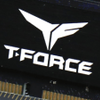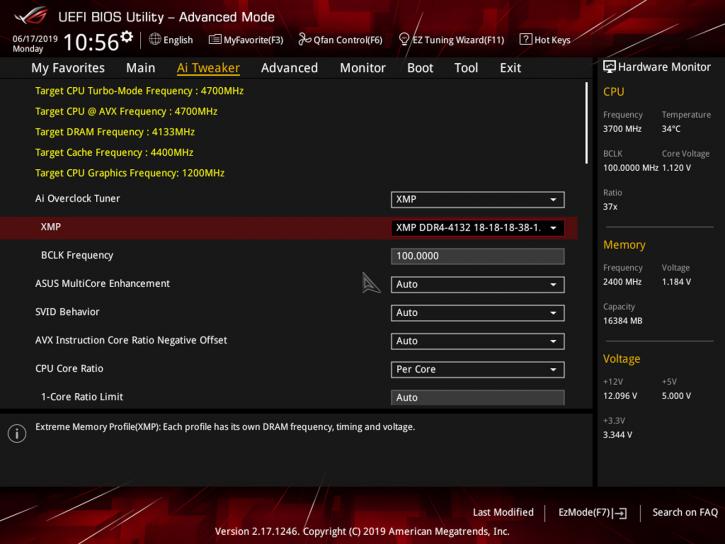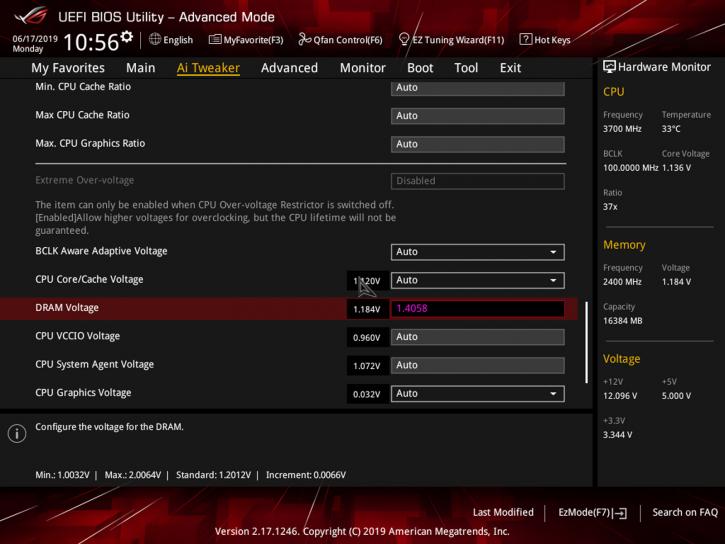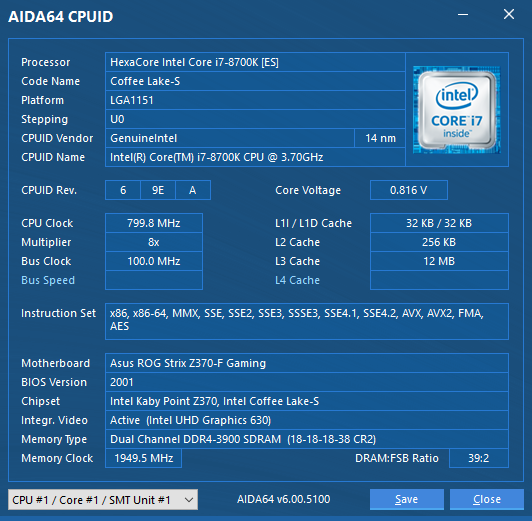Enabling your XMP 2.0 profile
Enabling XMP 2.0 performance profiles
At default, your PC will always revert to 'safe' settings. Your memory will be configured at what is called an SPD JEDEC setting, the safe setting that will always boot your PC. For DDR4 on this platform, this is 2133 MHz with a JEDEC timing in the 15 to CL 19 range. This is done so that during, say, a new PC setup, your memory will always run stable and steady. However, if you purchase a Ferrari, that doesn't mean you can't pass 120 KPH right? This is why both AMD and Intel created memory profiles aka XMP (other names for AMD) which is short for Xtreme Memory Profile. So while 2133 MHz is standard for the processor and chipset combo, the motherboard manufacturers offer way higher memory configurations and performance as long as your DDR4 memory allows it. How do we get XMP profiles enabled? Simple... go into your BIOS:
Above an example of enabling the XMP profile
You simply enable the XMP profile, save the BIOS and reboot. One word of advice though, use a proper brand motherboard. TeamGroup has a QVL list on their website for each type of memory, showing supported vendors and motherboards.
Overall if you go with MSI, ASUS, ASRock on Z270/Z370/Z390, you're good to go up to 3866 MHz. Anything higher is increasingly difficult. XMP is an Intel abbreviation, for AMD it's XMP-A / BEMP or whatever it is called in the BIOS, same thing, different name. Some manufacturers do name it XMP on AMD platforms as well. Once we enabled the XMP profile we can see that the memory frequency, voltages, and timings have updated to what the XMP SPD on the memory is configured for.
Please read: Unfortunately, our motherboard would not post beyond 3900 Mhz on this memory. The STRIX Z370-F Gaming only has support up-to 3866 MHz and as it turns out, very few motherboards can actually take this memory. After a bit of tweaking the maximum frequency that was 1005 stable was 3900 MHZ at the advertised timings, and as such we'll need to test at that (somewhat limited) frequency. This is not the fault of Team Group, it's just that the motherboard does not support it.




